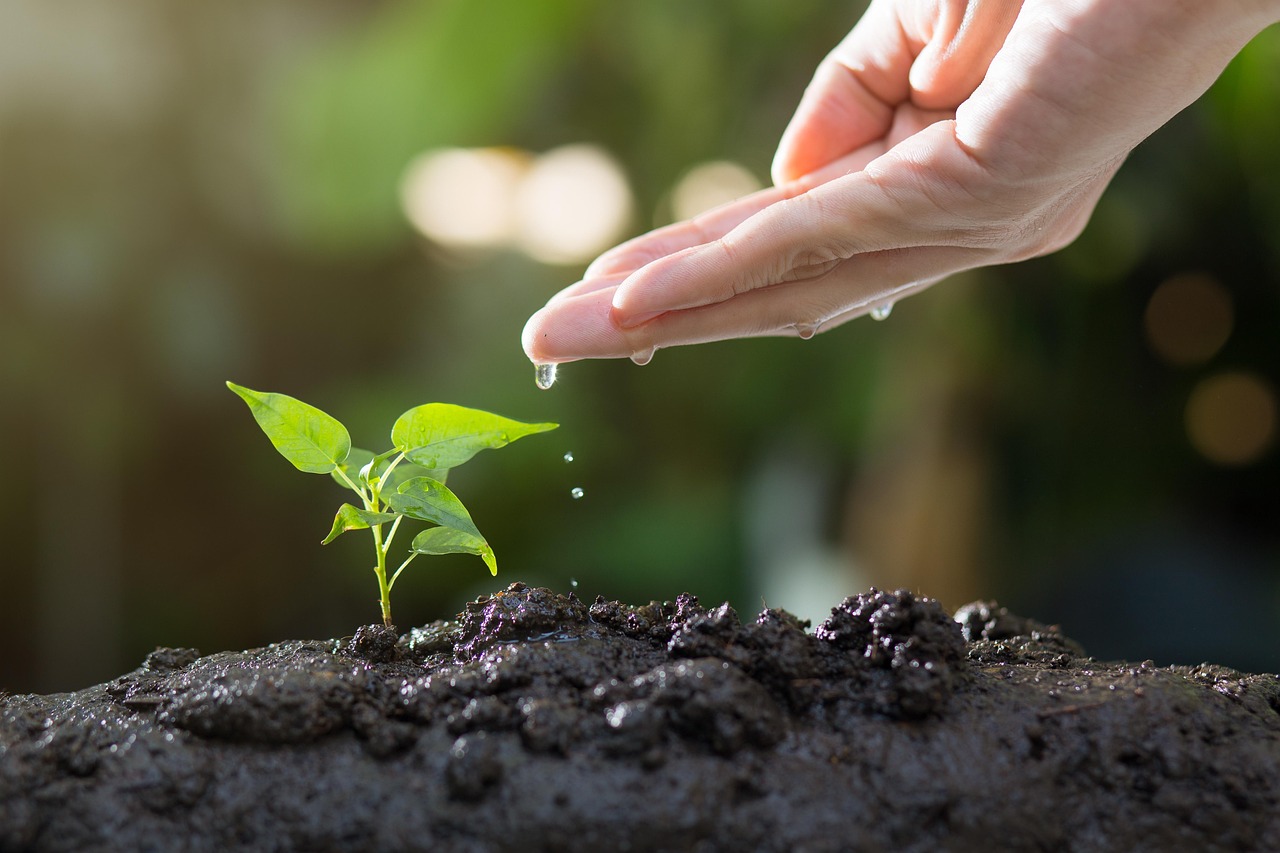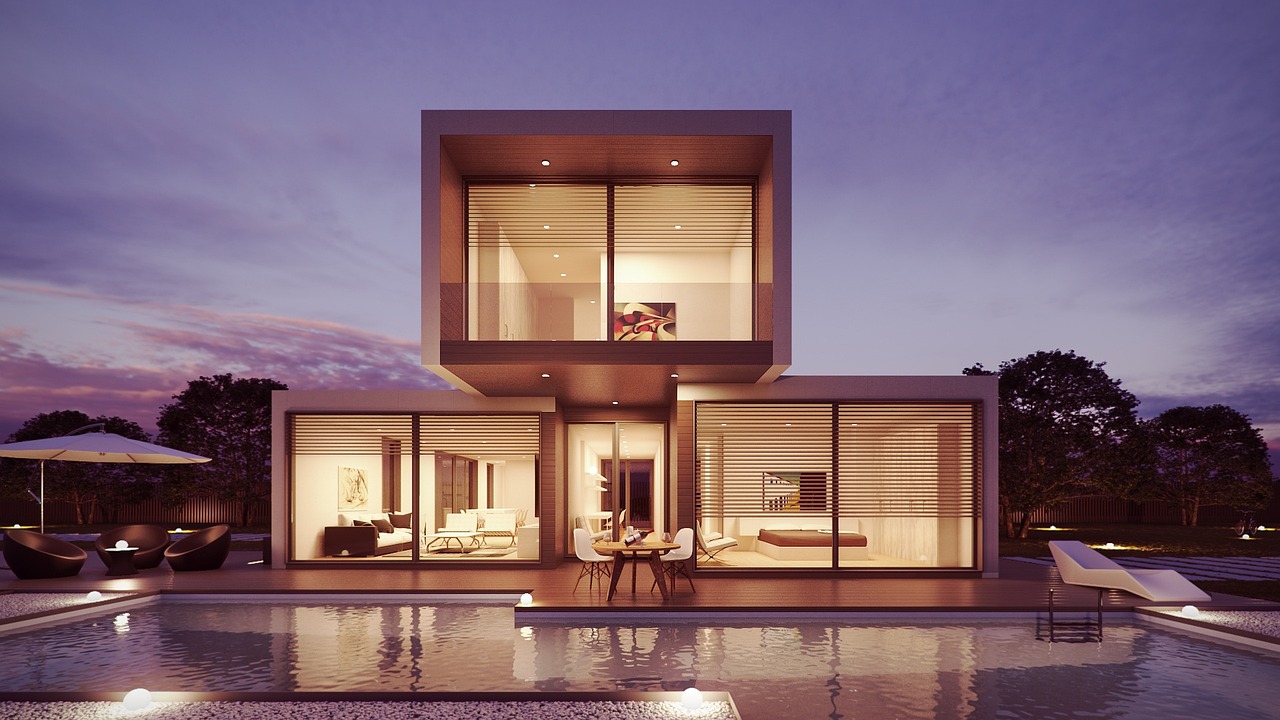Sustainable Living: Top 5 Eco-Friendly Practices for Your Home Garden


 Composting is a natural process that transforms kitchen scraps and yard waste into rich, nutrient-filled soil. It’s like giving back to the earth what it has already provided us.
Composting is a natural process that transforms kitchen scraps and yard waste into rich, nutrient-filled soil. It’s like giving back to the earth what it has already provided us.  Healthy soil is the foundation of a thriving garden. It’s packed with life, from tiny microbes to earthworms that aerate and enrich it. To improve soil health, start by testing its pH level.
Healthy soil is the foundation of a thriving garden. It’s packed with life, from tiny microbes to earthworms that aerate and enrich it. To improve soil health, start by testing its pH level.
In a world where luxury is about big, glamorous living spaces, minimalism has gained lots of craze in interior design. People are embracing the idea of simplifying their living spaces without ever compromising on style or functionality. If you’re looking for innovative ideas to make the most out of your compact prefab house, then you’ve come to the right place.
In this blog post, we’ll explore some minimalist marvels that will transform your tiny abode into a stylish and efficient haven. So, let’s dive in and discover how less can truly be more when it comes to interior design for compact prefab houses.
 The beauty of multifunctional furniture lies in its ability to adapt seamlessly to different needs throughout the day. As one of the most famous ingenious pieces of multifunctional furniture, the storage ottoman reigns supreme. Not only does it provide an extra seat or footrest in your living room, but it also opens up to reveal hidden storage space inside.
The beauty of multifunctional furniture lies in its ability to adapt seamlessly to different needs throughout the day. As one of the most famous ingenious pieces of multifunctional furniture, the storage ottoman reigns supreme. Not only does it provide an extra seat or footrest in your living room, but it also opens up to reveal hidden storage space inside.
Perfect for stashing away blankets, pillows, or any other items that need to be easily accessible yet out of sight. For those who work from home or enjoy crafting hobbies, consider investing in a desk that doubles as a dining table. This innovative piece allows you to have ample workspace during the day and then easily converts into a stylish dining surface when evening comes.
Every inch of living space counts. One way to maximize storage without sacrificing floor space is by utilizing vertical storage solutions. From wall-mounted shelves to overhead cabinets, there are plenty of options available that can make a big impact in small spaces. If you’re looking for a more unique approach to vertical storage, consider using hanging organizers or hooks on walls and doors. These versatile solutions can hold anything from shoes and hats to kitchen utensils and cleaning supplies.
When it comes to compact prefab houses, a neutral color palette can work wonders in creating a sense of openness and tranquility. By using light colors such as whites, grays, and beiges, you can make the space feel much larger than it actually is. One benefit of a neutral color palette is its versatility. Neutral tones serve as a canvas for any style or theme you want to incorporate into your interior design. Whether you prefer a minimalist look with clean lines and sleek furniture or a cozy bohemian vibe with textured fabrics and earthy accents, neutrals provide the perfect backdrop.
Last but not least, imagine having a wall that can be folded up to create an open-plan living area during the day and then unfolded to separate spaces at night for privacy. This not only saves valuable square footage but also brings a sense of modernity and functionality to your interior design. Sliding doors are another excellent option for small spaces. They effortlessly glide along tracks, taking up minimal floor space while still maintaining the ability to divide rooms when needed. Plus, they allow natural light to flow through different areas, creating an airy and spacious feel.
All in all, the key to achieving a successful minimalist interior lies in thoughtful design choices and strategic organization. So whether you’re downsizing due to necessity or simply yearning for a simplified lifestyle surrounded by only what brings you joy, embracing minimalism in your prefabricated home is undoubtedly worth exploring.…

Home security is more important than ever before. With the advent of technology, there are now many ways to keep your home and family safe. In this blog post, we will discuss five ways that technology is changing home security. Keep reading to learn more!
 Remote monitoring systems allow you to stay connected with your home, even while you are away. With these systems, you can view live feeds from security cameras and get notifications if any motion is detected. You can also access alarms remotely and arm or disarm them as needed. This helps give you peace of mind knowing that your home is being watched.
Remote monitoring systems allow you to stay connected with your home, even while you are away. With these systems, you can view live feeds from security cameras and get notifications if any motion is detected. You can also access alarms remotely and arm or disarm them as needed. This helps give you peace of mind knowing that your home is being watched.
 Another way technology is revolutionizing home security is with intelligent locks. These locks allow you to control your front door from any location using your smartphone or another connected device. You can lock and unlock your doors remotely, and even keep track of who comes in and out of your home.
Another way technology is revolutionizing home security is with intelligent locks. These locks allow you to control your front door from any location using your smartphone or another connected device. You can lock and unlock your doors remotely, and even keep track of who comes in and out of your home.
This helps you keep an eye on things when you’re away or even when you’re home and need to keep an eye on the kids. In addition, many of these locks come with keyless entry, so you don’t have to worry about losing keys.
Home sensors are also becoming increasingly popular for home security. These sensors can detect smoke, water leaks, and other potential problems in your home before they become serious issues. These sensors are connected to your phone or an alarm system, so you will be alerted if there is a potential issue before it becomes too late. Plus, many of these sensors can be integrated with other home automation systems so that you can control them from your phone or voice command.
 Finally, intelligent cameras are another way technology is changing home security. Smart cameras can detect motion, record video, and alert you if something suspicious occurs in or around your home. This helps give you an extra layer of protection against intruders, as well as being able to monitor activity in and around your home from any location.
Finally, intelligent cameras are another way technology is changing home security. Smart cameras can detect motion, record video, and alert you if something suspicious occurs in or around your home. This helps give you an extra layer of protection against intruders, as well as being able to monitor activity in and around your home from any location.
As you can see, technology is revolutionizing home security in many ways. With remote monitoring, smart locks, home sensors, and smart cameras, you can keep an extra layer of protection for your family and belongings. These technologies make monitoring your home from anywhere in the world more accessible, giving you peace of mind even when you’re away. Investing in these technologies can help ensure your home is safe and secure.…